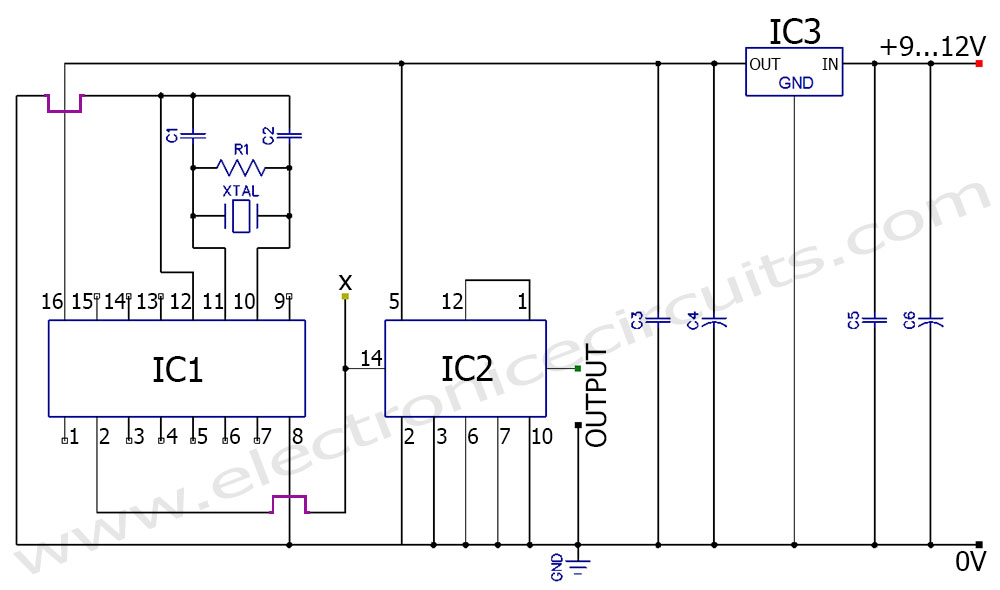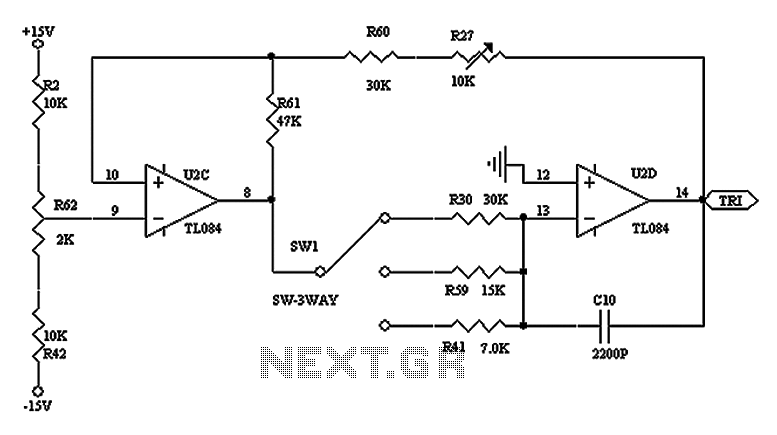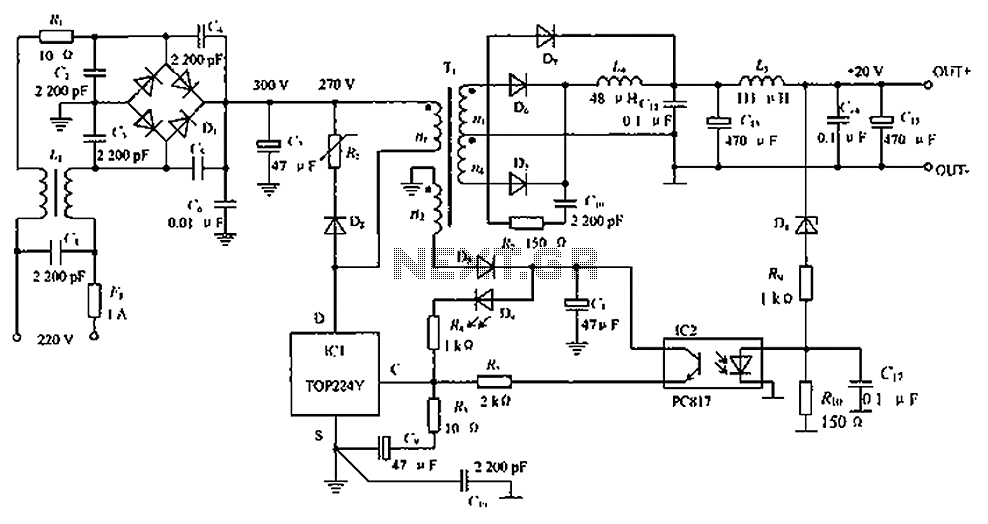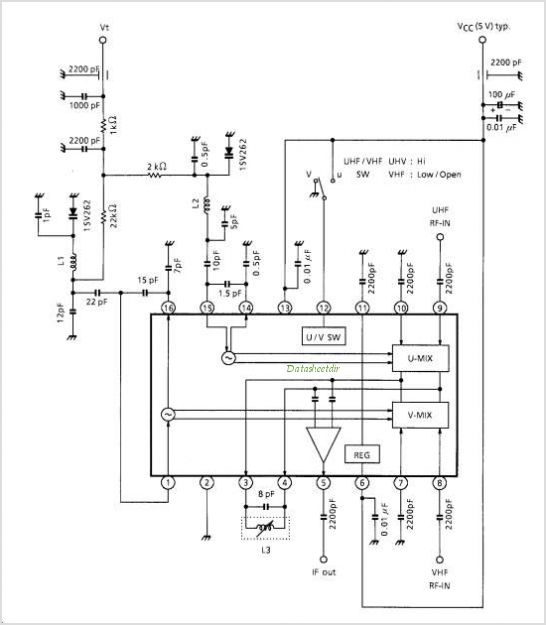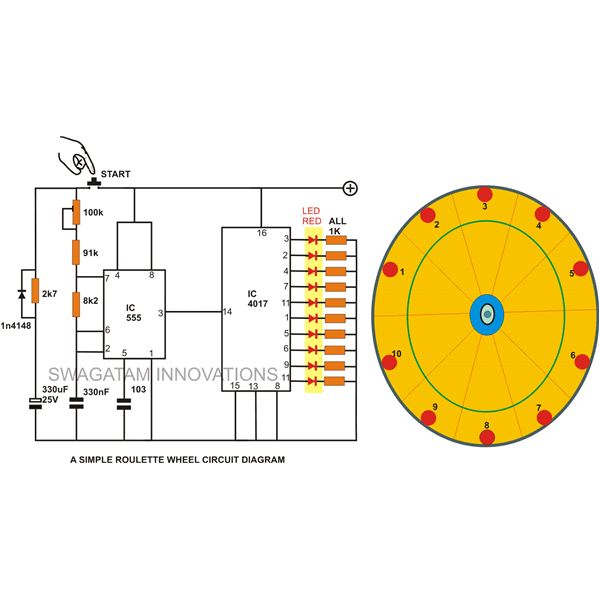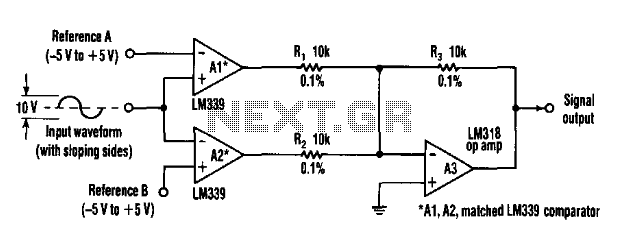
simple white noise generator
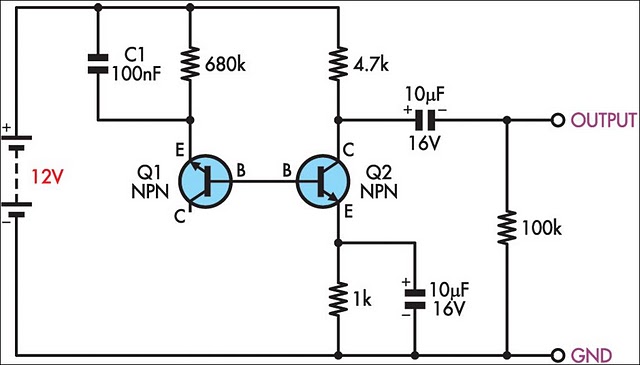
This two-transistor white noise generator exhibits approximately 30 dB more noise than traditional designs. Transistors Q1 and Q2 can be any small-signal transistors with a beta rating of up to 400. The reverse-biased emitter-base junction of Q1 serves as the noise source, which is then fed into the base of Q2. Q2 acts as a simple amplifier with a gain of 45 dB. The enhanced output level is primarily attributed to the presence of capacitor C1, which provides a low-impedance AC source to the noise source without interfering with the DC bias of Q1.
The two-transistor white noise generator circuit utilizes a pair of small-signal transistors, Q1 and Q2, to produce a high level of white noise. The design leverages the inherent noise generated by the reverse-biased emitter-base junction of Q1, which acts as the primary noise source. This noise is then coupled to the base of Q2, where it is amplified.
Transistor Q1, operating in the reverse bias condition, generates noise due to the random motion of charge carriers within the semiconductor material. This noise is characterized by its broad frequency spectrum, making it suitable for applications requiring white noise.
Transistor Q2 is configured as a common-emitter amplifier, providing a significant voltage gain of approximately 45 dB. The gain is achieved through the transistor's configuration and the selection of appropriate biasing resistors, ensuring that Q2 operates within its active region. The gain can be further influenced by the choice of components in the circuit, including resistors and capacitors.
Capacitor C1 plays a crucial role in this circuit by acting as a coupling capacitor. It allows the AC component of the noise signal to pass through while blocking any DC component, thus preserving the DC biasing conditions of Q1. This ensures that Q1 remains in the correct operating region, allowing for consistent noise generation without distortion due to DC shifts.
The overall design is compact and efficient, making it suitable for various applications, including audio testing, random number generation, and other electronic applications that require a reliable source of white noise. The ability to use small-signal transistors with a high beta rating enhances the performance of the circuit, ensuring a robust noise output while maintaining low power consumption.This two-transistor white noise generator has a surprising feature about 30dB more noise than the more traditional designs. Q1 and Q2 can be any small-signal transistors with a beta of up to 400. The reverse-biased emitter-base junction of Q1 provides the noise source, which is fed into the base of Q2.
Q2 forms a simple amplifier with a gain of 45dB. The improved output level is due mainly to the inclusion of C1, which provides a low-impedance AC source to the noise source while not disturbing the DC bias of Q1.. 🔗 External reference
The two-transistor white noise generator circuit utilizes a pair of small-signal transistors, Q1 and Q2, to produce a high level of white noise. The design leverages the inherent noise generated by the reverse-biased emitter-base junction of Q1, which acts as the primary noise source. This noise is then coupled to the base of Q2, where it is amplified.
Transistor Q1, operating in the reverse bias condition, generates noise due to the random motion of charge carriers within the semiconductor material. This noise is characterized by its broad frequency spectrum, making it suitable for applications requiring white noise.
Transistor Q2 is configured as a common-emitter amplifier, providing a significant voltage gain of approximately 45 dB. The gain is achieved through the transistor's configuration and the selection of appropriate biasing resistors, ensuring that Q2 operates within its active region. The gain can be further influenced by the choice of components in the circuit, including resistors and capacitors.
Capacitor C1 plays a crucial role in this circuit by acting as a coupling capacitor. It allows the AC component of the noise signal to pass through while blocking any DC component, thus preserving the DC biasing conditions of Q1. This ensures that Q1 remains in the correct operating region, allowing for consistent noise generation without distortion due to DC shifts.
The overall design is compact and efficient, making it suitable for various applications, including audio testing, random number generation, and other electronic applications that require a reliable source of white noise. The ability to use small-signal transistors with a high beta rating enhances the performance of the circuit, ensuring a robust noise output while maintaining low power consumption.This two-transistor white noise generator has a surprising feature about 30dB more noise than the more traditional designs. Q1 and Q2 can be any small-signal transistors with a beta of up to 400. The reverse-biased emitter-base junction of Q1 provides the noise source, which is fed into the base of Q2.
Q2 forms a simple amplifier with a gain of 45dB. The improved output level is due mainly to the inclusion of C1, which provides a low-impedance AC source to the noise source while not disturbing the DC bias of Q1.. 🔗 External reference
